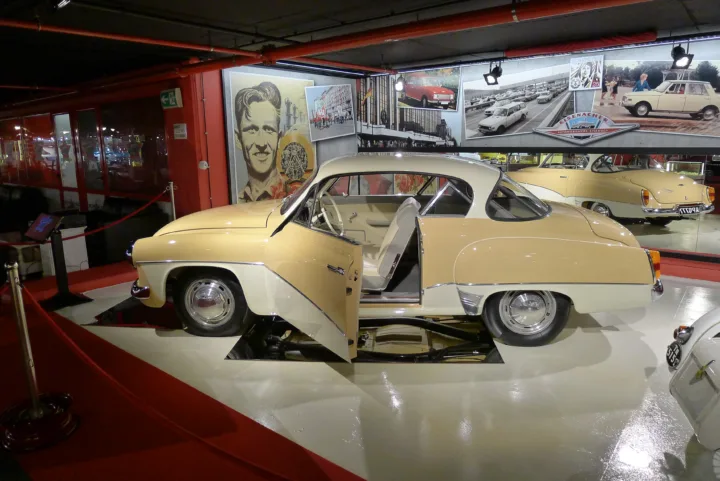Wartburg 311/3 Coupe: the only hardtop of the socialist camp
In the first years of its production, the Wartburg 311 was a very successful export model, since two-stroke engines were still being accepted in the West at that time. Therefore, the East German manufacturer invested serious resources in diversifying the range to the limits of what was possible. Thus, luxury versions of the standard sedan, coupe, convertible, two types of station wagon with three and five doors, a pickup truck and even an attractive two-seater sports model appeared, available with a removable or removable hard top. However, this exotic variant with the numerical index 313 was produced in a very limited edition and the mass sports version of the Wartburg was the two-door coupe, designated as 311/3 piese auto online.

Like all other variants of the 311 series, the coupes were based on the chassis and main body of the standard Wartburg 311 sedan, introduced in 1955. Therefore, they were identical from the front bumper to the A-pillars, including the windshield, the dashboard and the steering column. As a distinguishing feature, depending on the model, different headlight bezels were installed. The coupe and convertible also shared the rear of the sedan, including the trunk lid and the fuel tank cap. However, the rear fenders were extended and the wall behind the rear seat was designed differently. However, the floor structure, frame, engine, transmission and mechanics also remained completely identical in all models (except for the station wagon and pickup, which had reinforced springs, larger wheels and a shorter gear ratio). The differences in dynamics and maximum speeds between the models (except for the station wagon and pickup) were solely due to different weights and aerodynamics.
The body design was designed in the specialist body shop in the East Saxon town of Meerane, with Erich Lüsebink and Peter Thieme developing and implementing the model. It was first presented to the public, together with the Wartburg Camping and the Wartburg 313 Sport, at the Leipzig Spring Fair in March 1957. The first versions still had the so-called "shark" grille and were distinguished by some additional exterior decorative elements. They were also available with a complex three-tone body combination (which is difficult to see in the photos, as the roof is only a slightly different color from the adjacent surfaces). In 1959, all models adopted the new radiator grille, first introduced on the sports model 313 two years earlier.
For the first three years (1957, 1958 and 1959) the coupes were built in Miran. In 1959, however, the production of the Trabant P50 station wagon was taken over there, and their production was transferred to the factory of the former private coachbuilder Gläser in Dresden, where until then small series of the Wartburg 311/2 convertible were being built.
The most notable feature of the Wartburg 311/3 is the absence of center pillars. Thus, with the side windows removed, the car takes on the appearance of an attractive hardtop, which is very popular with Western customers, to whom it is mainly aimed. Unlike the short-lived convertible version of the 311, which was dropped from the company's range in 1959, the Wartburg 311/3 Coupe was produced from 1957 to 1965, and a total of 5,487 copies were made during this period. One of them today adorns the Retro Museum in Varna, from which the attached photos are from.
- 2025-06-01 - The most interesting from Spasovden 2025
- 2025-05-31 - Smart #1 Pro - a hashtag for driving pleasure? (TEST)
- 2025-05-29 - Porsche 914: a different perspective
- 2025-05-28 - New Electric Motorcycles 2025: Ultraviolette F77 Mach 2
- 2025-05-27 - A carriage without a driver: the onslaught of robot taxis
- 2025-05-26 - Xiaomi SU7 will have an SUV sibling: YU7
- 2025-05-24 - What are the three most important electric vehicles of 2025?
- 2025-05-23 - A cyclist crashed into a rare old-timer
- 2025-05-22 - In the new Scenic, a camera recognizes the driver and adjusts the seat specifically for him
- 2025-05-21 - Flashback: Suzuki reveals the new Grand Vitara












